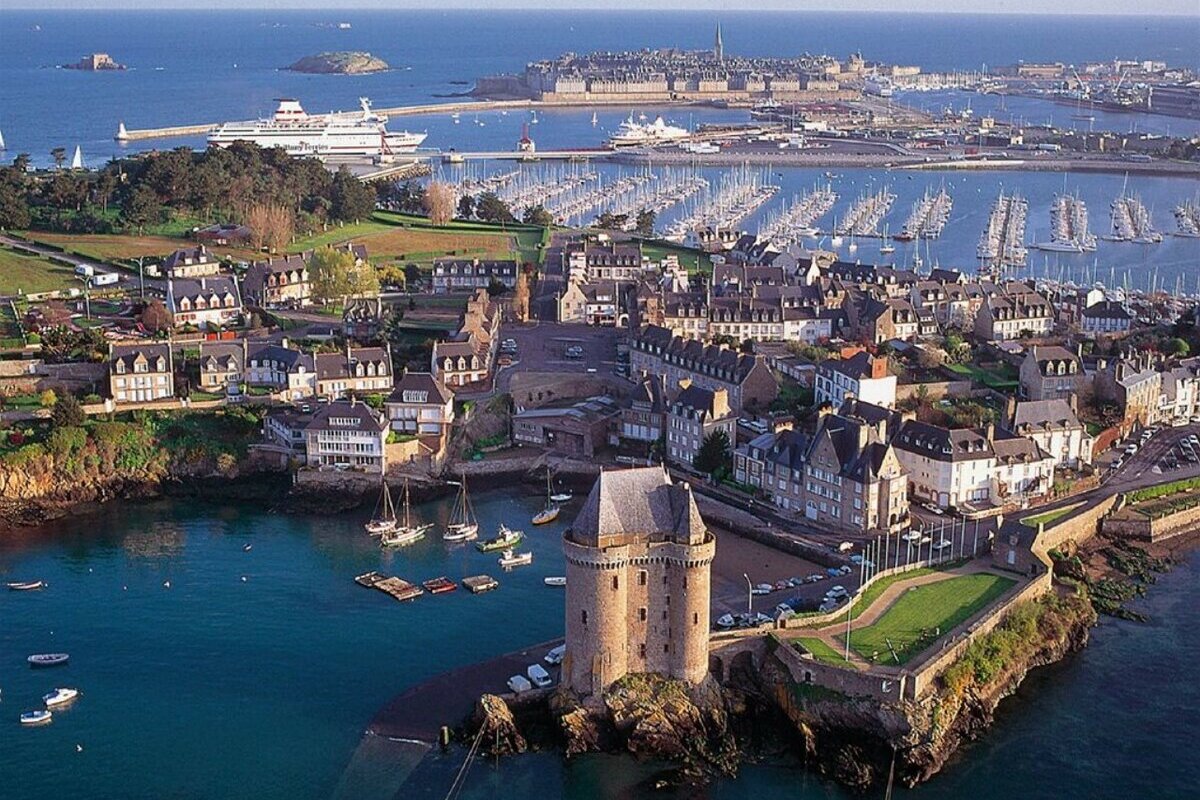Brittany is a region in western France that captivates with its unique culture, ancient history, and stunning landscapes. Here you can feel the spirit of Celtic heritage, hear the Breton language, taste unusual seafood, and wander through medieval towns. Brittany is unlike other French regions, as it proudly preserves its distinct identity, traditions, and music. The sea is ever-present, and legends and myths seem to linger in every stone. Below are fascinating facts you might not know about Brittany but that are certainly worth discovering.
- Brittany is considered one of the six Celtic nations, along with Ireland, Scotland, Wales, Cornwall, and the Isle of Man. The Breton language, related to Welsh, is still spoken here. Although the number of speakers is small, it is taught in schools and supported by cultural organizations.
- Brittany has the longest coastline in France, stretching over 1700 kilometers. The shore is known for its wild cliffs, peaceful coves, and numerous lighthouses. It attracts surfers, artists, and travelers who seek nature without crowds.
- The region is home to one of the oldest megalithic sites in the world — the Carnac stones. These standing stones date back to the Neolithic era, around 4500 BCE. Some weigh tens of tons and are arranged in perfect rows despite having been placed without modern tools.
- Brittany is steeped in legends about King Arthur, the wizard Merlin, and fairies. The Brocéliande Forest, also known as the Paimpont Forest, is believed to be the setting of many Arthurian myths. Visitors can find the Barenton spring and Merlin’s supposed grave, which have become tourist attractions.
- Brittany has a distinctive musical tradition featuring instruments such as the bombarde and biniou, which resemble the oboe and bagpipes. These are often heard at festivals, village celebrations, and weddings. Breton dances are performed in circles and often include ritualistic elements.
- The region is famous for its seafood, particularly oysters, mussels, scallops, and crabs. Many coastal towns have active fishing fleets that provide fresh catch daily. Seafood dishes are not only delicious but also part of the region’s cultural heritage.
- Cider is the traditional drink of Brittany and is served with nearly every meal. It is made from local apple varieties, often without added sugar. Many villages have family-run cideries that follow recipes passed down through generations.
- The city of Saint-Malo, once a stronghold of corsairs, still retains its defensive walls. It has a rich maritime history and produced many of France’s famous explorers. Walking along its ramparts with a view of the Atlantic is a must for visitors.
- Traditional Breton costumes are known for their high lace headpieces, especially worn by women. These outfits are worn during festivals and cultural events. Each village or town has its own recognizable style based on shape and decoration.
- Brittany is the birthplace of the now-famous salted butter caramel. It is made from butter, sugar, and Guérande sea salt. Today, this treat is used in desserts, chocolates, and even liqueurs around the world.
- Every Sunday, traditional markets are held in many Breton towns where you can buy fresh fish, cheese, cider, and handicrafts. These markets are not just commercial events but also social gatherings for locals and tourists. They are the perfect place to experience the authentic atmosphere of the region.
- The climate in Brittany is mild and oceanic, with frequent rain that supports lush greenery. You can find palms, hydrangeas, and camellias, which are rare in other parts of France. Even in winter, temperatures rarely fall below freezing.
- Brittany hosts many cultural festivals, including Fest-Noz — a traditional music and dance celebration recognized by UNESCO as intangible cultural heritage. These events feature folk bands, local markets, and traditional games. They are essential for preserving and passing on Breton identity.
- The city of Quimper is renowned for its traditional Breton pottery — faience. The ceramics are decorated with scenes of rural life, flowers, and geometric patterns. This craft is a symbol of regional artisanal heritage.
- Brittany has a long history of seeking autonomy, and although it is fully integrated into France today, cultural independence movements still exist. Organizations promote the Breton language, education, and historical awareness. Many residents proudly identify as Bretons.
These remarkable facts about Brittany show how rich, original, and inspiring this French region truly is. It combines Celtic roots, medieval history, and a deep love for the sea and culture. Brittany is more than just a travel destination — it is a living legend with a soul of its own. If you want to discover an unexpected side of France, Brittany is the perfect place to start.





